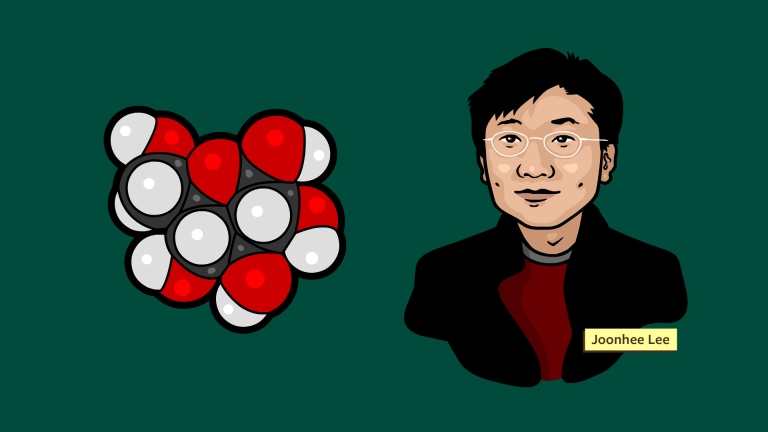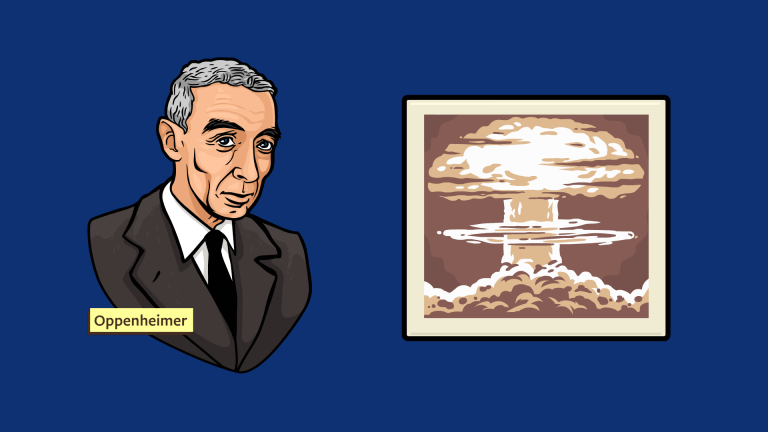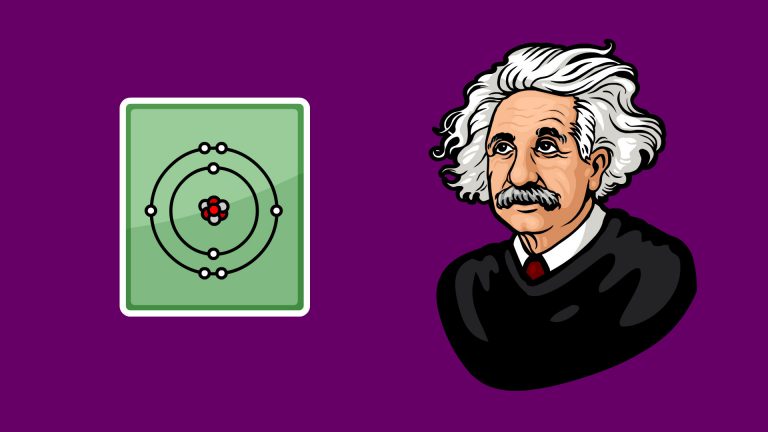Overview
It has been said that without microscopy, there is no modern science. Before the microscope, we did not know that bacteria and viruses existed. People invented myths about curses and witches to explain disease. To control illnesses, we depended on cultural taboos and crude theories. The invention of the microscope changed all of this!
In this animation you will learn the early artwork made by Robert Hooke as he looked into a microscope. Microscopes were extremely rare in his day but his drawings made the microscopic world accessible to everyone.
We are then introduced to Antonie van Leeuwenhoek and his discovery of single celled organisms. We learn a bit about how light works (using a simplified particle model) and why light can’t be used to see atoms and molecules. We then finish by seeing how modern microscope innovators have solved this problem, bringing us spectacular images of the elements that make up our world.
This animation is part of a 4 part series funded by the CaSTL research group. Aside from this animation, they also produced a wonderful video game for classroom use called Bond Breaker. Below are the other three Stated Clearly animations in this series:
Explore Further
Historical books and paper shown in this animation:
Papers about CaSTL’s “Chemiscopes”
- Visualizing vibrational normal modes of a single molecule with atomically confined light
- Near-field nanoprobing using Si tip-Au nanoparticle photoinduced force microscopy with 120:1 signal-to-noise ratio, sub-6-nm resolution
- Ultrafast Microscopy: Imaging Light with Photoelectrons on the Nano–Femto Scale
- Bond-Selected Photodissociation of Single Molecules Adsorbed on Metal Surfaces
- Tip-Enhanced Raman Excitation Spectroscopy (TERES): Direct Spectral Characterization of the Gap-Mode Plasmon
In this animation we use a particle model to show how light works. While this model is extremely useful (and the most intuitive for people new to the study of light), it is more accurate to model light as a wave in the electromagnetic field. For a intro on this, see Khan Academy’s series on light.
Contributors
Our videos benefit from guidance and advice provided by experts in science and education. This animation is the result of collaboration between the following scientists, educators, and our team of creatives.
Team
- Jon Perry
- Jordan Collver
- Anthony Danzl
- Tyler Proctor
Advisors
- Ara Apkarian, PhD
- Eric Potma, PhD
- Venkat Bommisetty, PhD
Corrections
The word Animalcule is a combination of “animal” and the diminutive suffix -culum. The word molecule is built from the same suffix.
Transcript
All throughout history, diseases have been mysterious and terrifying. Unable to see the bacteria and viruses that cause many of our illnesses, we created myths to explain our suffering. We thought diseases were caused by demons, witches, or were curses sent to punish humankind.
With the invention of the first microscopes, the fog of confusion began to clear.
A microscope is any tool that allows us to see details and objects that would otherwise be too small to see with our eyes alone.
It’s hard to say who invented the first microscope because people have probably been playing around with magnifying lenses ever since clear glass was invented but it could be argued that the first person to really promote the use of microscopes as serious tools of science, was artist and researcher, Robert Hooke.
In 1665 he published a book called micrographia. It was filled with beautiful drawings he made while gazing through his microscope. In the book he reported, apparently for the first time, that razor blades aren’t really that sharp if you look at them close up, that insects have strange compound eyes, and that plants appear to be made of tiny structures that he called “cells”.
Several years later, a fabric merchant named Antonie van (lay van huke) started designing his own microscopes so he could better examine the quality of fabrics he was buying. Curiosity led him to examine many subjects aside from fabric and he eventually discovered microorganisms. He reported seeing tiny creatures that scientists of his time didn’t know existed. He found them living in pond water, beer, his own saliva, and… a number of his other bodily secretions. He called the critters animalcules – a lovely mashup of the word animal and molecule. Instead of being grossed out by what he found or embarrassed by the fact that he spent so much alone-time with his own body fluids, Antonie van (lay van huke) was proud of what he found! He wrote about his discoveries in scientific letters that were eventually published by the Royal society – England’s most prestigious scientific organization.
All the microscopes described so far, and most of the microscopes you’ll find in a high school or college classroom, are what we call “light microscopes” or “optical microscopes”. This is because their lenses bend normal visible light in order to function. Though they can be used to see cells and many microorganisms, including bacteria, they are not powerful enough to see most viruses. To understand how they work and why they have limitations, we first need to know a bit about vision in general.
Anything we would call a light source – the sun, a light bulb, a candle – is constantly emitting photons – tiny packets of light. It’s often helpful (though it’s not technically accurate) to think of a single photon as a little squishy ball that travels at the speed of light in a straight line. When it hits something (depending on what it hits), it can either bounce off, pass through, or be absorbed.
A burning candle spits out billions of photons per second in all directions which then bounce off objects until the photons are absorbed.
Lining the back of the inside of your eyeball is a photon detection screen made of cells. Your retina. When photons bounce off of an object, happen to go directly through your pupil and strike your retina, they are absorbed and a message is sent to the brain saying “light of this color hit the retina here” Your brain is constantly piecing thousands of these signals together into a moving picture.
Here’s the important take away from all of this: Sight works because lots of little projectiles (in this case, photons of visible light) are bounced off of objects in the environment, and then absorbed into a detection screen (in this case, the retina in the back of your eye).
If you want to build a seeing machine, you can use just about anything as your projectiles (you could use gummy bears instead of photons if you want) so long as lots of projectiles can be bounced off of the object you want to see, and so long as your projectiles can leave a mark on some kind of detection screen.
There is more to building a good seeing machine (as you may have noticed, this one can only show us the rough outline of a flat object and it wouldn’t even be able to do that nearly as well in real life as in this cartoon) but one thing worth understanding now, is that if you want a clear picture, each of your projectiles should be smaller than the object you want to see.
Sadly, the wavelength of a photon of visible light is far larger than many things scientists want to look at. Far larger than an atom, larger than most proteins, and even larger than many viruses.
Because of this, in the 1930s, two scientists, Ernst Ruska and Max Knoll, created the world’s first functioning electron microscope. These microscopes shoot electrons at their subjects instead of photons – Electrons can be up to 100,000 times smaller in wavelength than photons of visible light.
Here we see an electron microscope image of pollen grains, these could be seen with a light microscope as well but would not be very detailed. Smaller still, here we see HIV, the virus that causes AIDS. Each individual has been highlighted in green in this image. Here we see the rabies virus, here we see the ebola virus, and here, we see new guy in town. Finally, we are brought face to face with what was once an invisible enemy! We clearly understand the causes of our diseases. Most of them, at least.
Wonderful as this advancement was, scientists continued pushing further still.
In the 1980s, an entirely new way of seeing was invented when researchers at IBM produced the first scanning probe microscope. There are now many types of scanning probe microscopes all of which work by feeling the bumps and valleys along the surface of an object with a tiny metal probe, much like a person who is blind reads braille with their fingertips.
Data collected from the probe as it scans is used to generate an extremely high resolution image. Here we see not cells, not viruses, but individual atoms! The elements of matter itself!
In 2009, with funding from the National Science Foundation, physical chemist Dr. Ara Apkarian, along with several colleagues, founded the CaSTL research center – that’s Chemistry at the space time limit. He chose team members from among the world’s greatest microscope innovators including Dr Kumar Wickramasinghe (wick rama sing ha) who engineered microscopes for IBM, Dr. Nien-hui Ge (nien hhway ga) who specializes in imaging biological molecules, and Dr Wilson Ho, known for having built several of his own scanning probe microscopes from scratch.
The purpose of the CaSTL research center is to push the limits of what can be seen through a microscope. To do this, they have combined the use of visible light with scanning-probe microscopes.
As I’m sure you recall, photons of light are far too large to see individual atoms and molecules, but CaSTL researchers found that if photons are aimed at a properly built probe (a silver needle shaped in just the right way), that probe can guide photons to the probe’s apex and compress them to dimensions much smaller than their usual size. At the apex, near the sample, photon ‘quanta’ are absorbed and re-emitted, allowing even individual atoms to be seen. In other words, CaSTL researchers found a way to shrink light!
The various machines they’ve built all work slightly differently and have a variety of jargon-rich names but in general, they are referred to as “chemiscopes”. They let us record, not just the shapes of molecules, but also the motions of atoms inside them. These molecular motions are what power chemical reactions.
In the field of quantum physics, chemiscopes will aid in the development of quantum computers, because they allow us to directly record a molecule’s quantum behavior.
In the field of biology, chemiscopes are being designed to allow us to directly read an organism’s DNA, instead of relying on the tedious and error-prone sequencing techniques used today.
In the field of medicine, chemiscopes are now allowing us to see viruses so clearly that not only can we tell different species apart, we can tell different strains of the same species apart. This allows us to watch how they evolve over time and figure out when new vaccines might need to be produced.
From simple lenses allowing us to see that insects have compound eyes, to the light-shrinking chemiscope allowing us to see virus evolution – microscopes have come a long way. Each step clearing the fog of our confusion.
I’m Jon Perry and that is a brief history of the microscope, Stated Clearly.




